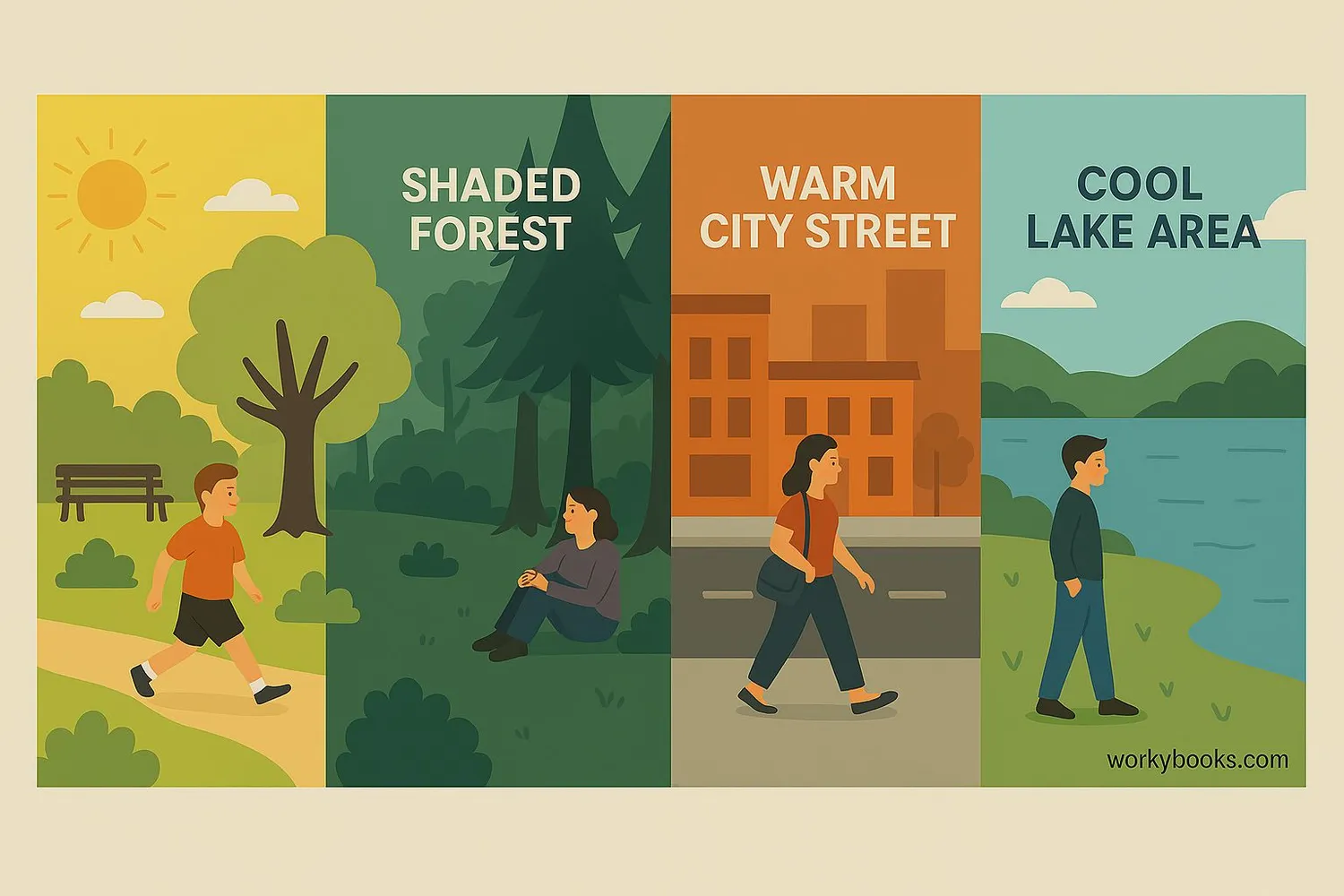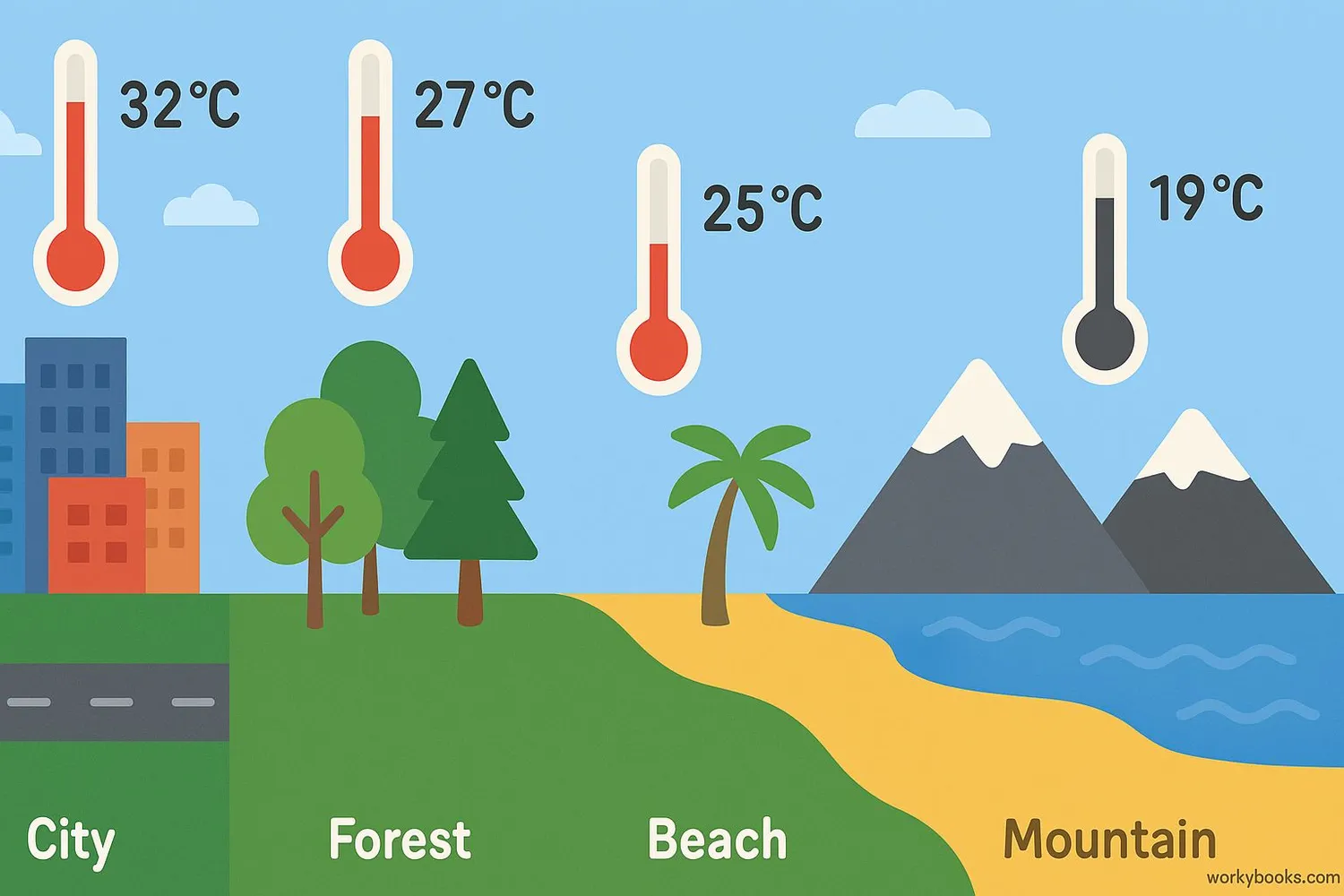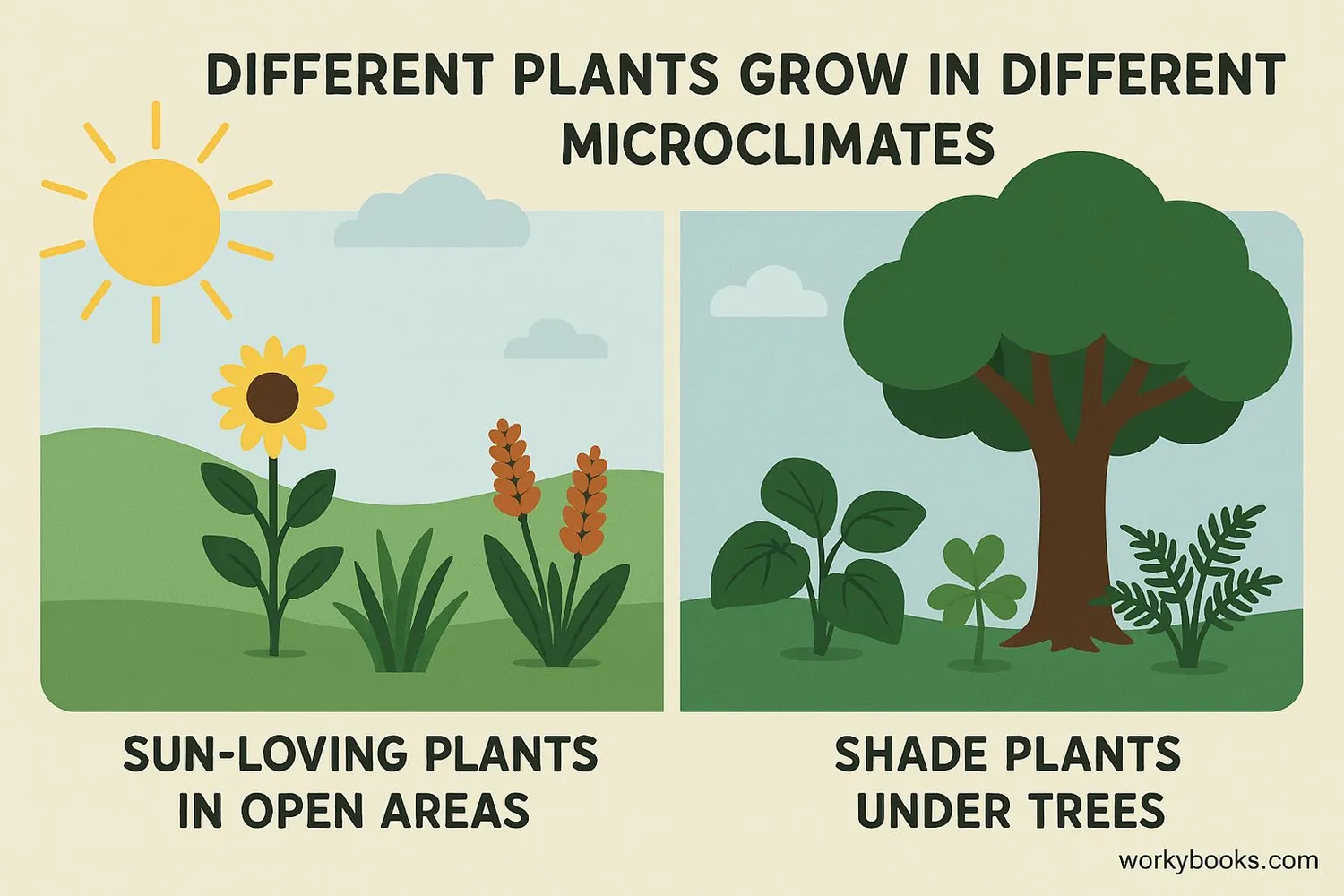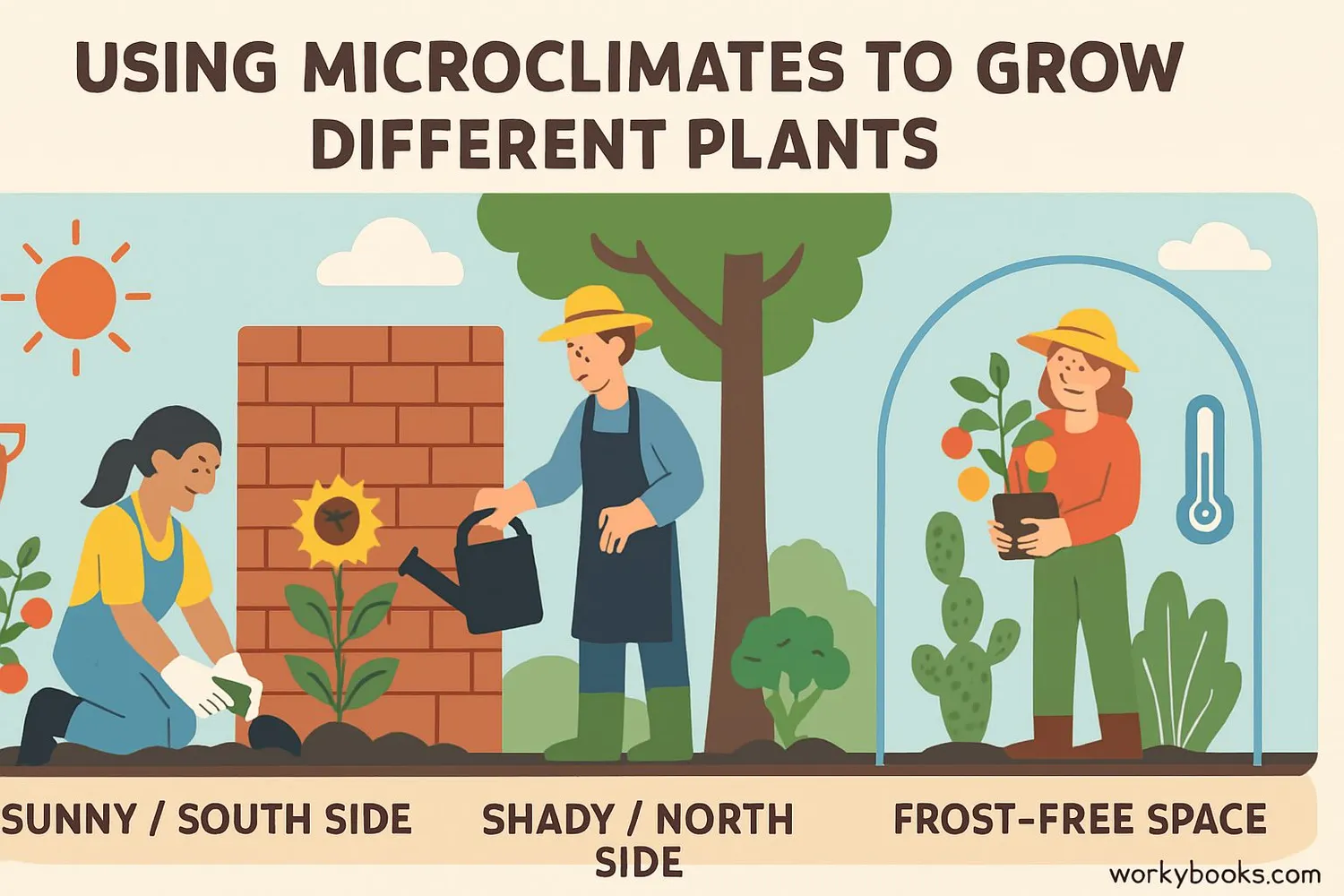Microclimates - Definition, Examples, Quiz, FAQ, Trivia
Discover how small areas can have their own unique weather patterns!
What is a Microclimate?

A microclimate is a small area with its own special weather conditions that are different from the surrounding areas. Think of it like a tiny weather bubble! While the general climate describes weather patterns over large regions, microclimates focus on small, specific places.
Microclimates can be as small as your backyard or even the space under a rock! They're created by local features like buildings, trees, hills, or bodies of water that change how sunlight, wind, and moisture affect that spot.
Definition: A microclimate is the climate of a small, specific place within an area as contrasted with the climate of the entire area.
Real-world Example!
The south side of your house might be warmer than the north side because it gets more sunlight. That's a microclimate!
Types of Microclimates

There are several types of microclimates that you might experience in your daily life:
Urban Microclimate
Cities are warmer than surrounding areas due to buildings, roads, and human activities. This is called the "urban heat island" effect.
Forest Microclimate
Forests are cooler and more humid than open areas because trees provide shade and release moisture into the air.
Coastal Microclimate
Areas near water have milder temperatures because water heats and cools more slowly than land.
Upland Microclimate
Higher elevations are cooler and windier than valleys below them.
Plant Microclimate
The area around plants creates its own small climate with different temperature and moisture levels.
Temperature Differences
On a hot summer day, the temperature in a city can be 5-10°F warmer than in the countryside just a few miles away!
Importance of Microclimates

Microclimates play a crucial role in our world and affect many aspects of our lives:
Ecosystems
Microclimates create habitats for different plants and animals that couldn't survive in the larger climate.
Urban Planning
Understanding microclimates helps architects design more comfortable and energy-efficient buildings.
Weather Prediction
Microclimatology helps meteorologists make more accurate local weather forecasts.
Microclimate effects include:
• Determining which plants can grow in an area
• Influencing where animals build their homes
• Affecting how we heat and cool our buildings
• Changing how precipitation is distributed
By studying microclimates, scientists can better understand how climate change affects different areas and how we can adapt.
Microclimates in Gardening & Agriculture

Gardeners and farmers use microclimate knowledge to grow plants successfully:
Sun Exposure
Plant sun-loving vegetables in south-facing spots that get the most sunlight.
Moisture Control
Place moisture-loving plants in low spots where water collects naturally.
Wind Protection
Use walls or hedges to create sheltered microclimates for delicate plants.
Microclimate agriculture techniques include:
• Planting on slopes to avoid frost pockets
• Using stone walls to create warm microclimates for early crops
• Growing different crops on different sides of hills
• Creating windbreaks to protect fields
Farmers have used microclimate knowledge for centuries to grow crops in challenging environments!
Microclimate Quiz
Test your microclimate knowledge with this fun quiz! Answer all 5 questions to see how much you've learned.
Frequently Asked Questions
Here are answers to some common questions about microclimates:
Fun Microclimate Trivia
Discover some amazing facts about microclimates!
City Heat Islands
New York City can be up to 15°F warmer than surrounding rural areas on summer evenings! This urban microclimate effect is called the "heat island."
Tree Thermometers
The temperature under a tree on a sunny day can be 20°F cooler than in direct sunlight! That's why animals seek shade under trees during hot weather.
Coastal Magic
In coastal areas, the ocean creates a microclimate that makes summers cooler and winters warmer than inland areas just a few miles away.
Mountain Effects
For every 1,000 feet you climb up a mountain, the temperature drops about 3.5°F. That's why mountain peaks can have snow while the base is green!





